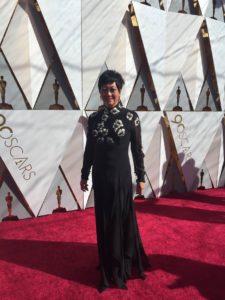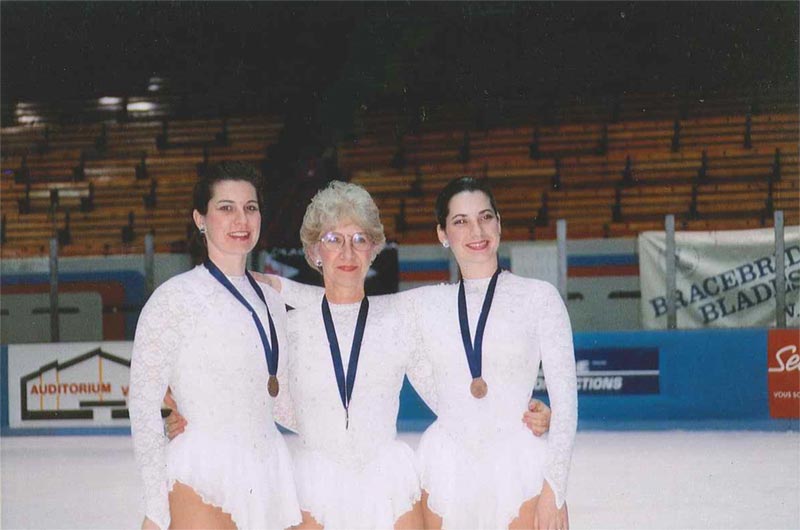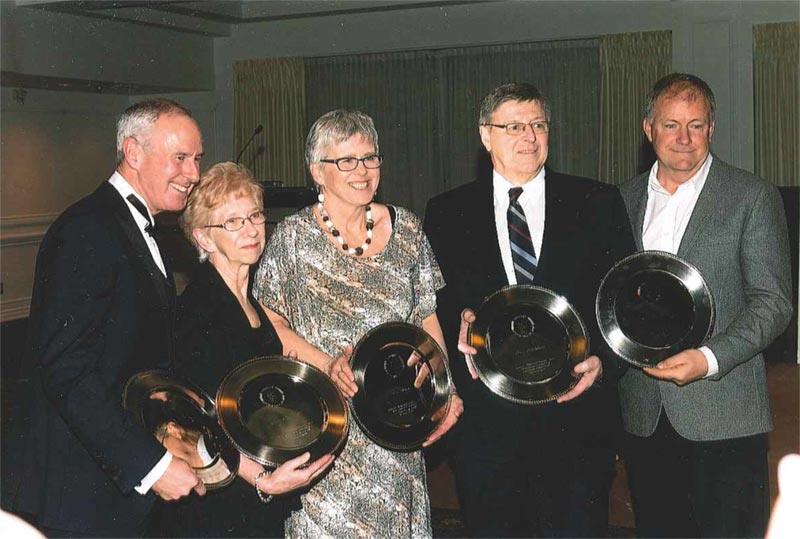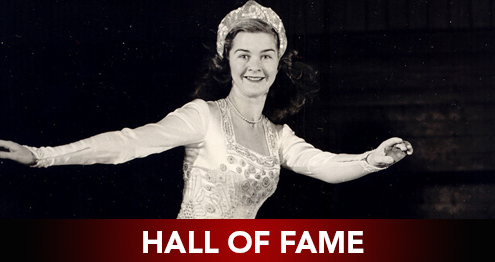Toller Cranston, skating champion, artist, bon vivant, and force of nature, would have been positively bursting at the sight of it: a posh party honouring him. Surrounded by old friends, chocolates, and best of all: at the Art Gallery of Ontario, a place he was never able to professionally penetrate in his life.
But finally he has, with a vast array of his works from the start to the finish of his career, graciously loaned by various patrons of his fantastical art (mystic symbolism, he once called it) under the swooping eaves of the gallery. Beneath large screens where Cranston’s skating performances played and played again, perched a long row of his paintings, forged with colourful strokes from his imaginative world of Silk Road.
Now the brushes are still, but Cranston will live on, if not in many hearts, in a legacy he would cherish. Through the Canadian Olympic Foundation, a charitable foundation affiliated with the Canadian Olympic Committee, comes the new Toller Cranston Memorial Fund. It’s meant to help those of Cranston’s ilk, skaters with artistic promise. The fund will help young skaters aspire to the Olympics, and artistry counts.
It wasn’t always easy for Cranston in his early days, because he had no such financial aid. Coach Ellen Burka first spotted him in tears after he finished fourth at the 1968 Canadian championships, and missed the Olympic team. She felt compelled to comfort him, telling him: “Don’t worry. Your time will come.”
Two weeks later, Cranston called her to tell her that he had been told to forget about the sport, and that he was too old at 18, but he loved it and wanted one more shot at it. Would Burka coach him?
Burka said she had to think about it, but the next day, he was at the Toronto Cricket Skating and Curling Club. “He looked pretty overweight,” she recalled, holding court in the AGO as she told her story. “He didn’t look so hot.” She wasn’t impressed after he had done his routines for her. “He stood there sweating,” she said. “Steam was coming off his hair. I’ve never seen that before.”
But Burka gave him the goods, that he needed to lose weight, that he needed to improve his conditioning, and that she didn’t like his program or his music. And she told him he wasn’t properly dressed for the ice. “He was wearing a brown jumpsuit with a zipper from here to here,” she said. “And a belt. And everything was hanging out.”
Cranston turned and left. But two days later he was back, telling Burka, “I will do anything you tell me.”
He showed up at patch the next morning at 7 a.m., but also with a huge portfolio of his work. Burka had no idea he was an artist. “They were beautiful,” she said. And then she discovered that he had been thrown out by two landlords, who weren’t fond of the smell of turpentine, and Cranston had no place to go. He also hadn’t eaten.
Burka told him he could stay with her for seven days until he found another place. He stayed for seven years.
The memorial was a blizzard of sport icons, but also fascinating people from Cranston’s life. Ludmila and Oleg Protopopov sent a note, regretting they could not attend, but writing: “We loved Toller, because his soul and mind were close to us,” they said. “Toller was an artist. We will forever keep the memory of Toller.”
Cranston’s dear friend Ken Taylor shuttled from New York to make the party. He is best known for his role in helping six American hostages escape from Iran while he served as Canada’s ambassador to Iran in 1979.
Norman Jewison, film director for Academy-award winning movies such as “In the Heat of the Night,” “Moonstruck” and “Fiddler on the Roof” also showed up. Olympic champions Dorothy Hamill couldn’t miss it; neither could Jo Jo Starbuck, Sandra and Val Bezic, Barb Underhill, Lynn Nightingale, Donald Jackson, Shae-Lynn Bourne, Petra Burka, choreographer to the stars, Sarah Kawahara and Ron Shaver, Cranston’s nemesis, the man who made it difficult for Cranston to win his final Canadian title and then go on to take the Olympic bronze medal in 1976.
Organizing the whole soiree was Cranston’s sister, Phillippa, known as a university professor who taught a film course so well that nobody would ever skip class. “Toller was my brother,” she said. “I have been proud to call Toller my brother every day for more than 65 years.”
She was there with husband Dan Baran, twin brothers Guy and Goldie Cranston and “some of the most handsome and talented nieces and nephews and cousins that anybody could ask for.”
“I am the baby brother,” said Goldie, with piercing blue eyes, who admitted that he failed at stick figures and, sadly, at finger-painting as well. (Gus is 10 minutes older.) “Many of you here have no doubt experienced firsthand what I am to share with you: the Toller Challenge, or the Toller Inquisition.”
“He would relish putting people through the hoops of his choosing,” Goldie said. “He would challenge any number of people on any number of subjects in which he was extensively well versed: art, skating, current events, books, politics – anything in which he felt he had the upper hand.”
Goldie’s challenge was, ironically art. Toller figured he had a good eye. He’d drag Goldie to all sorts of art galleries, and say: “Okay, what’s the good stuff and I want to know this minute.”
“Apparently I passed because I stand before you here today,” Goldie said.
“As brothers, we weren’t particularly close, as you probably all know,” said Guy. “There’s no particular reason. We just weren’t close. We were no different from any other family.
“But he was family, and families do what families do. They come together. And so we have come together to ensure that his legacy lasts a very, very long time, with your help.”
Cranston’s best friend, Haig Oundjian took center stage, wearing a familiar red jacket. It had belonged to Cranston (“always wear bright colours,” he once said). Cranston had given it to him and then told him he bought it for $10 at a thrift store. Cranston was forever frequenting thrift stores, finding treasures and when he did, he would “Tollerize” them.
The partygoers heard about his penchant for being a generous host, and his lack of knowledge of technology and finance. At 3 o’clock early one morning, Oundjian got a call from Cranston, who blurted: “I’m ruined. I have nothing.”
“’Could you just email me?’” Oundjian said.
“What’s that?” Cranston said. “I don’t do those things.”
Oundjian had to fly to Mexico, and asked Cranston to show him his accounting process. It meant putting a hand down a vase to see what you can find. “There would be electrical bills, gas bills, all unpaid,” Oundjian said. “He had no concept of those things. He would say: ‘I’m an artist!’”
The memorial also heard how Cranston neglected his health and needed dental work. He also suffered a hernia, which became infected, and he did nothing about it. The result? He ended up in hospital, seriously ill. “He was within hours of death,” Oundjian said.
He loved Monty Python.
A few Tollerisms? Do not tolerate mediocrity. As you age, it is better to skate backwards. (Better for a receding hairline.) And the Oscar Wilde gem: “I may not always be right, but I am never wrong.”
The day Cranston died, Loreen Harper, wife of the Prime Minister, took the flag that fluttered that day at Parliament Hill in Ottawa and reserved it for the Cranston family. It found its way to the memorial. Normally there is a 20-year wait following a request. Cranston would be delighted to have jumped the queue.
Federal sport minister Bal Gosal presented the flag to a young generation of Cranstons.
“He was fearless, courageous and uncompromising, when it came to life on his terms,” brother Guy said.
Skating is all about the exits and the entrances, Cranston once said. He made all of them memorable. This one too.




